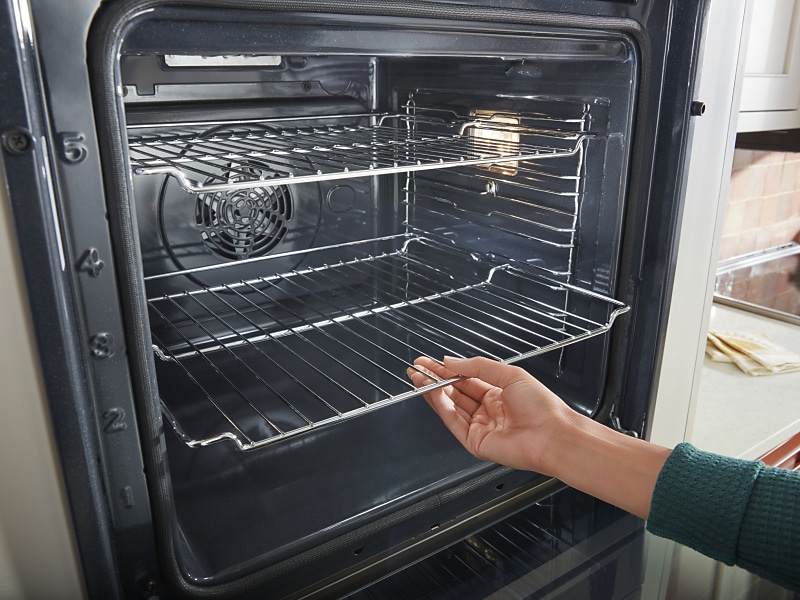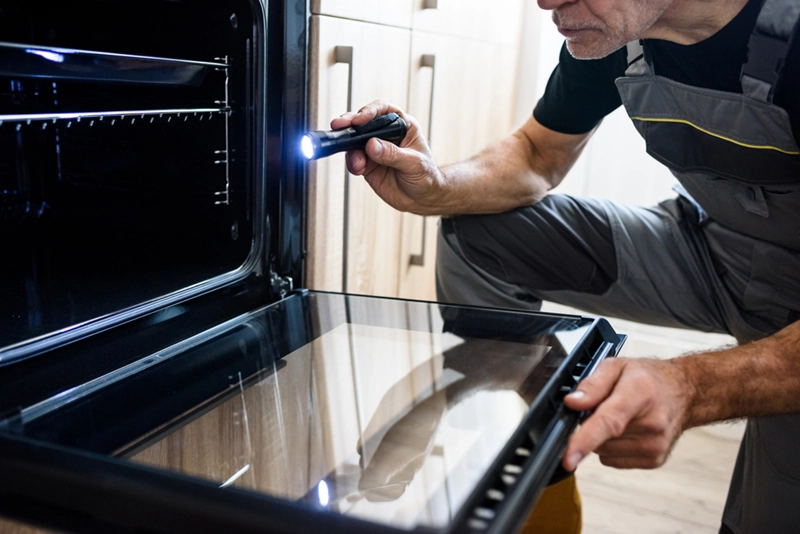Imagine preparing for a special dinner and your oven just refuses to heat up. Frustrating, right?
An oven not warming up can throw your entire cooking schedule off track. You’re left wondering what went wrong and if there’s a quick fix. You’re not alone; this is a common issue that many face. But don’t worry, we’ve got you covered.
We’ll explore why your oven might be acting up, and guide you through simple solutions that can get you back on track. Whether it’s a minor glitch or something more, understanding the problem is the first step to solving it. Keep reading to discover how you can tackle this issue head-on and ensure your oven is ready for your next culinary adventure.

Credit: www.youtube.com
Common Causes
Is your oven refusing to warm up? Understanding common causes is crucial. Resolving issues is easier if you know what to look for. Let’s explore some usual culprits behind an oven’s malfunction.
Power Supply Issues
Sometimes, the oven lacks power due to a faulty outlet. Check if the plug is secure. Inspect the circuit breaker for any tripped switches. Power fluctuations can disrupt your oven’s performance. Ensure the power cord is intact and not damaged.
Faulty Heating Element
The heating element might be broken. If your oven isn’t heating, this is a common reason. Inspect the element for visible damage or burns. A malfunctioning element won’t heat the oven properly. Replace it if necessary to restore the heat.
Malfunctioning Thermostat
A broken thermostat can lead to incorrect temperature settings. Your oven may not warm up due to a faulty thermostat. It controls the heating levels. If the readings are off, your oven won’t heat as expected. Consider testing or replacing the thermostat.
Broken Igniter
An igniter is crucial for gas ovens. If it’s broken, the gas won’t ignite. This prevents the oven from warming up. Listen for clicking sounds when turning on the oven. A silent igniter may need replacement. Ensure it functions well to maintain oven heat.

Credit: appliancerepair-sd.com
Troubleshooting Steps
When your oven isn’t warming up, it can disrupt your cooking plans. Identifying the issue is crucial. Follow these troubleshooting steps to find the cause. You might save a call to the repair technician.
Checking Power Connection
Start by ensuring the oven is plugged in. Check the outlet for power. Use a multimeter to test the voltage. A faulty power source prevents the oven from heating.
Inspecting The Heating Element
Examine the heating element for any visible damage. Look for breaks or burns. These signs indicate it needs replacement. Use a multimeter to test its continuity. No continuity means it’s defective.
Testing The Thermostat
The thermostat regulates oven temperature. Test it with a multimeter. If it shows inconsistent readings, it might need replacement. A faulty thermostat can cause uneven heating.
Examining The Igniter
Check the igniter if your oven is gas-powered. A weak igniter can cause heating issues. It should glow bright orange. If not, it might need replacing. Use a multimeter to test its functionality.
Safety Precautions
When your oven isn’t warming up, it’s crucial to prioritize safety. Working with electrical appliances can pose risks. Following safety precautions can prevent accidents and injuries.
Disconnecting Power
Always disconnect power before working on your oven. Unplug the oven from the wall socket. If the plug is not accessible, switch off the circuit breaker. This ensures no electricity flows through the oven. It reduces the risk of electric shock.
Using Protective Gear
Wear protective gear to stay safe. Use gloves to protect your hands from sharp edges. Safety goggles shield your eyes from debris. These basic precautions can prevent injuries. Always keep safety a top priority.

Credit: www.kitchenaid.com
Diy Fixes
Is your oven refusing to warm up? Don’t panic. Many issues can be fixed at home. Simple tools and a bit of patience are all you need. Let’s dive into some DIY fixes. These methods might save you a repair bill.
Replacing The Heating Element
A faulty heating element can prevent your oven from warming. Start by unplugging the oven. Remove the screws holding the heating element in place. Check for any visible damage or breaks. If damaged, replace it with a new one. Connect the wires to the new element. Secure it with screws. Plug the oven back in and test it.
Adjusting The Thermostat
If the oven heats unevenly, the thermostat might be off. Remove the thermostat knob. Use a screwdriver to adjust the small screws behind it. Make slight turns to calibrate the temperature. Test the oven after each adjustment. Ensure the oven heats to the desired temperature.
Cleaning The Igniter
An igniter covered in debris will affect heating. Turn off the oven and unplug it. Locate the igniter, usually near the burners. Use a cloth to gently wipe away dirt or grease. Ensure no residue remains. Plug the oven back in and check if it heats properly.
When To Call A Professional
When your oven refuses to warm up, it can disrupt your daily routine and cooking plans. Sometimes, the issue might be beyond simple fixes and require professional assistance. Knowing when to call a professional can save you from unnecessary stress and avoid potential hazards. Let’s dive into specific scenarios where expert help is essential.
Complex Electrical Issues
Electrical problems can be tricky and dangerous. If you’ve checked the basics like the power source and circuit breaker, but your oven remains cold, it may be time to call a professional.
Electrical faults could involve damaged wiring or malfunctioning components. These are not DIY-friendly fixes. Attempting to handle them yourself can result in electric shocks or further damage to your appliance.
Think about the last time you had an electrical issue at home. Wasn’t it reassuring to have an expert solve it efficiently? Don’t risk your safety; let professionals handle complex electrical issues.
Persistent Problems
Has your oven been unreliable lately, fluctuating between warm and cold? Persistent problems that don’t resolve with basic troubleshooting might indicate deeper issues.
Repeated attempts to fix the same problem could lead to more damage and increased repair costs in the long run. Consider how many times you’ve tried to fix something, only for it to break again. It’s frustrating, isn’t it?
Consulting a professional can provide a clear diagnosis and lasting solution. Ask yourself: is the temporary fix worth the hassle, or is it time for expert intervention?
Remember, your oven is a crucial part of your kitchen. Don’t let persistent issues spoil your cooking experience. Call a professional and regain your peace of mind.
Preventive Maintenance
Preventive maintenance ensures your oven runs smoothly. It reduces the risk of malfunction. Simple tasks can prevent big problems. Regular care saves money and time. Let’s explore key maintenance practices.
Regular Cleaning
Keep your oven clean to avoid issues. Food spills can affect heating. Use a damp cloth to wipe surfaces. Clean the oven’s interior monthly. Remove grease and food residue. This helps maintain efficient heating.
Routine Inspections
Check oven parts regularly. Inspect the heating element for wear. Look at the door seal for damage. A faulty seal lets heat escape. Ensure knobs and dials work correctly. Regular checks prevent major repairs.
Frequently Asked Questions
How Do You Fix An Oven That Won’t Heat Up?
Check the power supply and ensure the oven is plugged in. Inspect the heating element for damage. Test the temperature sensor and replace if faulty. Examine the control board for issues. Consult a professional if the problem persists.
Why Is My Stove Turning On But Not Heating Up?
A stove turning on but not heating may have a faulty heating element or a broken thermostat. Check for electrical issues or a malfunctioning control switch. Inspect wiring for damage or loose connections. Replace defective parts promptly to restore heating functionality.
Consult a professional if unsure about repairs.
How Do I Know If My Oven Element Is Blown?
Check for visible damage like burns or breaks on the element. Test the element’s continuity with a multimeter. A faulty element may not heat or produce uneven cooking results. Listen for unusual noises like buzzing or sparking. Inspect for any burnt smell when using the oven.
Is It Worth Replacing The Heating Element In The Oven?
Replacing the oven’s heating element is often worth it. It’s cost-effective and extends the oven’s lifespan. Fixing it can improve cooking efficiency and avoid the expense of a new oven. Always check if the replacement cost is reasonable compared to buying a new appliance.
Conclusion
Fixing an oven that won’t heat requires patience. Start with simple checks. Look at the power supply first. Reset the circuit breaker if needed. Examine the heating element next. It might be broken or worn out. Inspect the thermostat too.
It should control the temperature accurately. Clean any dust or grease from the oven. These steps often solve the problem. If not, call a professional for help. Regular maintenance prevents future issues. Keep your oven clean and serviced. Enjoy cooking without hassles.
Remember, a working oven makes every meal special. Happy cooking!

